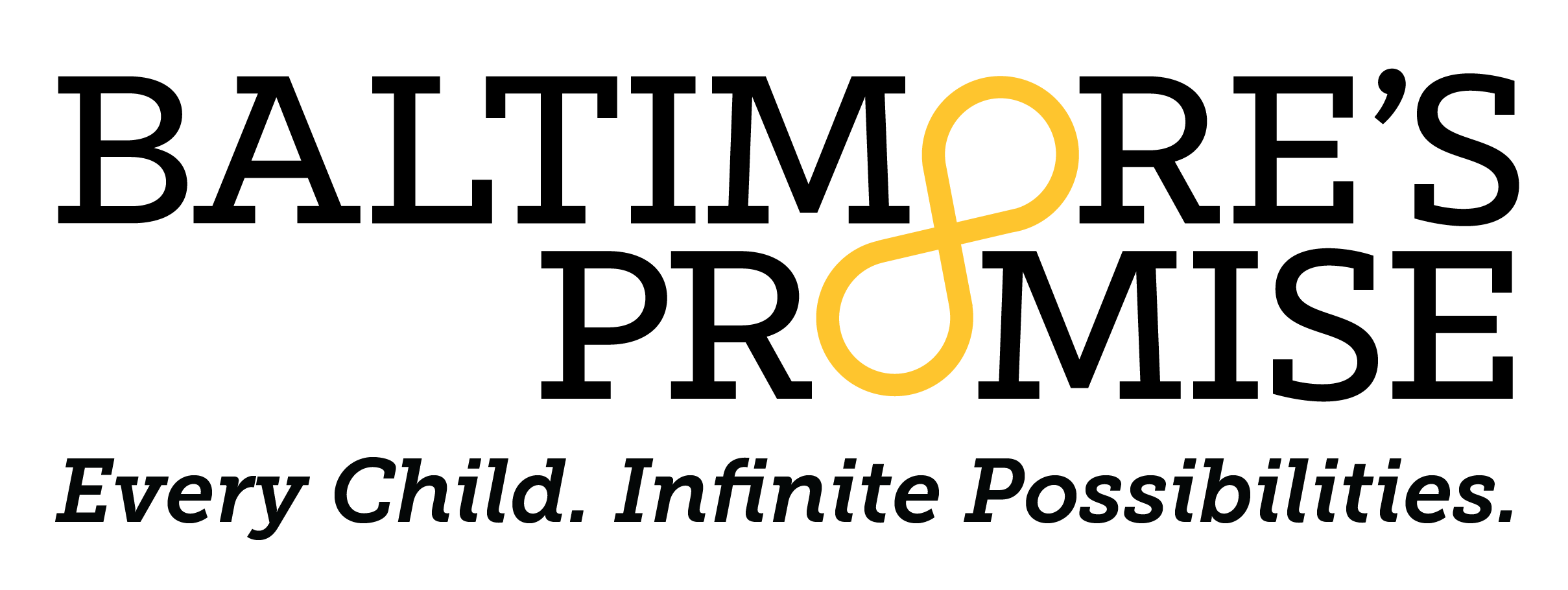Older Youth Literacy Demonstration Models
Our Commitment to Literacy
Baltimore’s Promise is committed to significantly improving the literacy rates of Baltimore City’s young people at a population level.
Since August 2019, a range of stakeholders – including the Board and staff of Baltimore’s Promise, students, young adults, and others – have engaged in a process to determine how best to achieve this goal. Grounding the process in multifaceted data on literacy proficiency and its impact on educational attainment and employment over time, we used a racial equity lens and collective impact approach, while seeking the insights of young people themselves. The engagement of youth was a priority for Baltimore’s Promise so we could better understand the challenges of low literacy levels in Baltimore City and their long-term impact.
Our main goal in this process was to develop a clear focus on the population bearing the heaviest burden of literacy outcomes and demonstrating the greatest need for additional opportunities. This focus allowed Baltimore’s Promise to begin discerning the most promising solutions, working collaboratively with partners, stakeholders, and youth. The process pointed us to a commitment to young people ages 14 to 24, with an intentional early emphasis on two subpopulations: Black/African American women ages 16 to 24 and their families, and current high school students enrolled in Baltimore City Public Schools.
Through our literacy efforts, we aspire to:
Support approximately 7,000 opportunities for youth and young adults;
Build evidence for what works in Baltimore City and a base of best practices and instructional resources for educators;
Foster cross-sector partnership and capacity building;
Change, align, and strengthen multiple systems and their ability to support particular populations and address literacy challenges at various stages (Early Childhood, Out of School Time, Public Health, K-12 Education, Higher Education, and Workforce).
Older Youth Literacy Demonstration Models
Our Literacy Demonstration Model concepts stem from the research, convenings, analysis, and strategy activities conducted since August 2019. Baltimore’s Promise commissioned a team of researchers to review older youth and family literacy interventions across the country. While the research team did not find a “silver bullet” to address the issues and root causes of low literacy levels in young adults, the team presented a helpful framework to begin reviewing what is already happening and deciding what is possible. The research used to inform our demonstration models is available here.
What is a Demonstration Model?
The term refers to a pilot designed to show how effective an intervention or initiative can be. A demonstration model may be composed of multiple interventions, paired with policy and systems changes that can affect long-term transformations. Baltimore’s Promise uses demonstration models to display our capacity to work collaboratively to positively affect population-level outcomes for youth over time.
Summaries of the Older Youth Literacy Demonstration Models we will begin implementing in FY22 to improve literacy outcomes for youth ages 14-24 are below.
OUT-OF-SCHOOL TIME STRATEGY
This strategy will increase the quality, quantity, and capacity of older youth-serving out-of-school-time (OST) programs to support literacy skill development. The strategy will build evidence for local approaches, scale evidence-based models, and share best practices and instructional resources across the OST field and with traditional, school-based educators.
EARLY CHILDHOOD FAMILY LITERACY STRATEGY
This strategy includes three key goals: leveraging and strengthening existing post-natal routing infrastructures for Black/African-American mothers ages 16-24; employing a two-generational approach to support family literacy; and embedding and growing this practice in diverse settings, including early childhood education, workforce training, and the community college system.
Our Approach to Scale
To make population-level improvements to older youth literacy outcomes in Baltimore City, we must implement these interventions in sustainable and scalable ways. We are using national and local best practices to increase available opportunities for youth and ensure all sectors are working together to make the greatest positive impact.
Grow Local Expertise
Effective approaches must draw from both national and local research and best practices
Expand Opportunities
Increase access to opportunities designed to change outcomes and make an impact
Sector and System Alignment
Support systems and partners across multiple sectors to intentionally and effectively collaborate
Timeline
Baltimore’s Promise will implement each strategy in two phases with time for assessment and adjustment between phases. The timeline below shows the schedule for implementation, as of September 2022.
Get Involved: We’re Looking for Implementation Partners!
We are actively seeking youth development partners as we embark on an ambitious ten-year journey to improve literacy outcomes for older in our community. Please complete the form below to get involved and we will be in touch soon.





